×
Save 20% On Your Purchase!
Use code SAVE20 at checkout to save on your purchase today from my Herbal Shop!
×
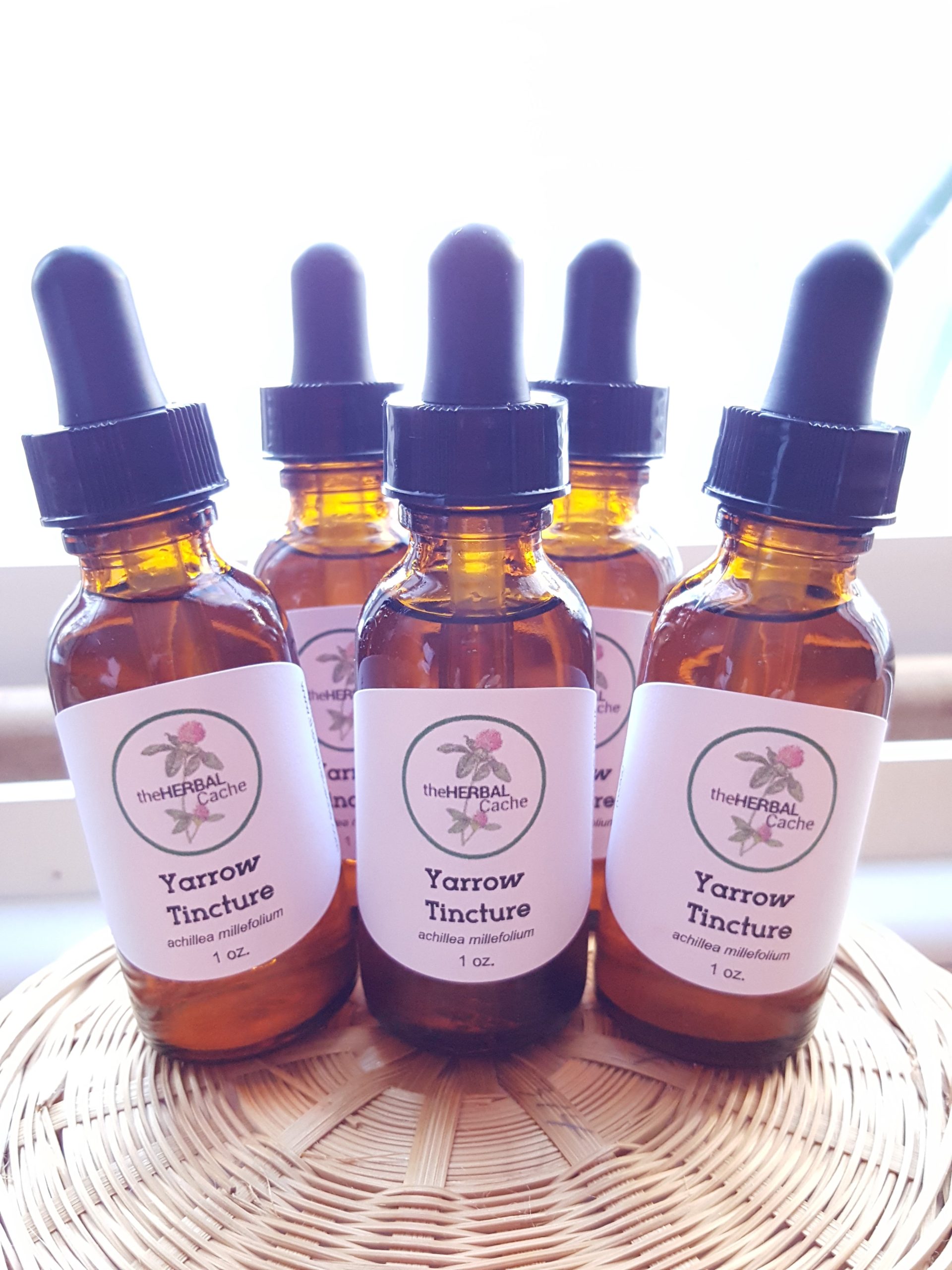
Elderberries have been all the craze for some time. People make syrup, jam, tea and more with these berries.
What I found out in researching elderberries, was that these berries are very special. They are like the secret remedy for colds and the flu!
There are a few types of elderberry plants, but the black elderberry, Sambucus canadensis, is favored. Because of its strong anti-viral properties, it a huge defender against colds and the flu. Thus the reason for being so popular in the fall.
Sadness and death can creep up at anytime. I don’t think one can ever be fully prepared for either.
I know I wasn’t.
My father passed away rather quickly just a few weeks ago. I’m still trying to wrap my head around it and keep asking myself, “Why?”
I also can’t help but wonder if I shouldn’t have done more, taken action, asked more questions, pushed harder, spoken up, made inquiries, etc. Why didn’t I?
These are questions that plague me everyday. I try to convince myself that it was his time. But was it?
The grief that overwhelms me is constant and heavy. Day in and day out, I ponder and wonder how I’ll be able to go on.
So I bring back happy memories. Those days filled with good things, like birthdays and weddings.
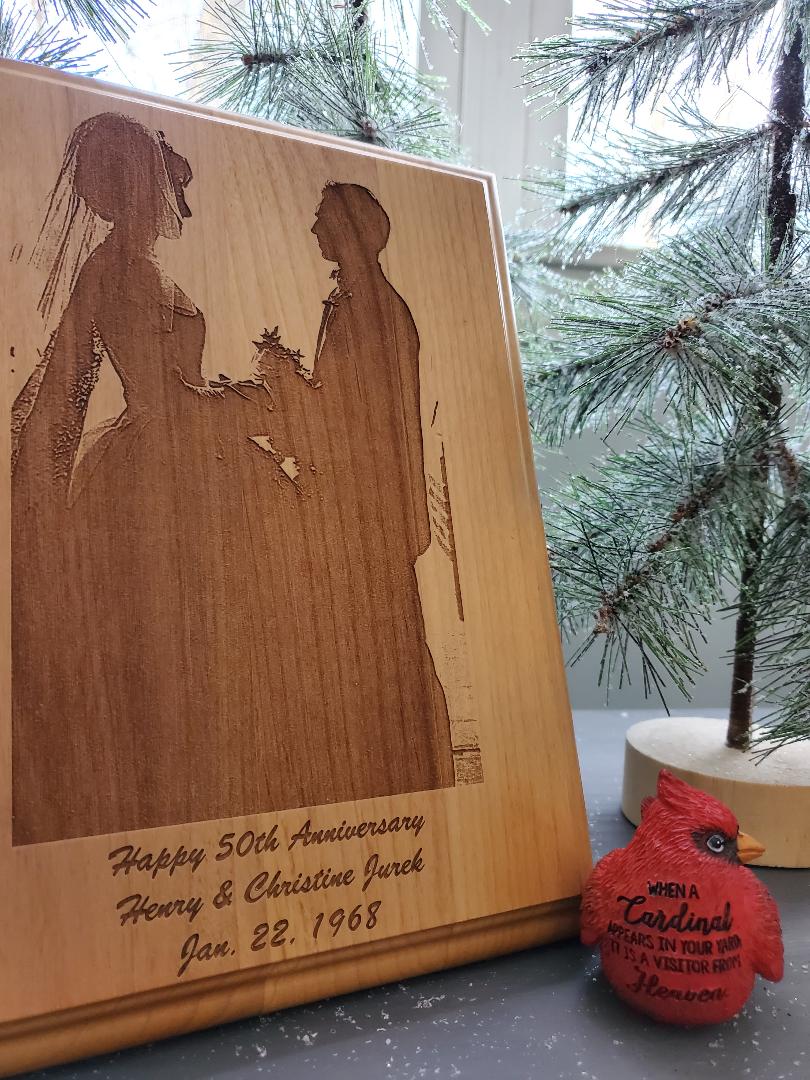
“When a cardinal appears in your yard, it is a visitor from heaven”
Everyone needs different forms of comfort and support when grieving. For me, it’s litttle things that don’t otherwise seem to matter.
Take the red cardinal for instance. A few days after my Dad’s passing, a bright red cardinal came and landed in the snow right outside my patio door. How it stood out in the snow!
I hadn’t seen a cardinal in the backyard for quite some time, so was pleasantly surprised.
A couple days later when I returned to work, a co-worker gave me the red cardinal, saying she had received one the year before when her father passed away. What a coincidence!
The appearance of a red cardinal has the spiritual meaning of a lost one who is thinking about you and sending you a message. That brought some comfort to me.
Deep rooted emotions of grief can be hard to cope with for everyone. Grief can affect people emotionally, physically, and spiritually. Grief also has the ability to affect you physically as well as mentally.
In these cases, we may need something more then just comfort to help us move through our grief. I needed something to help me fall asleep so I wasn’t constantly questioning my actions, or rather, lack of action before my Dad passed away.
So I turned to my plant allies.
Herbs have been around since the beginning of time. They have been used for many different things from illness to helping cope with situations such as loss, sadness and death.
Lets take a look at some herbs that have been used, and still used today as ways to help with dealing with grief and death.
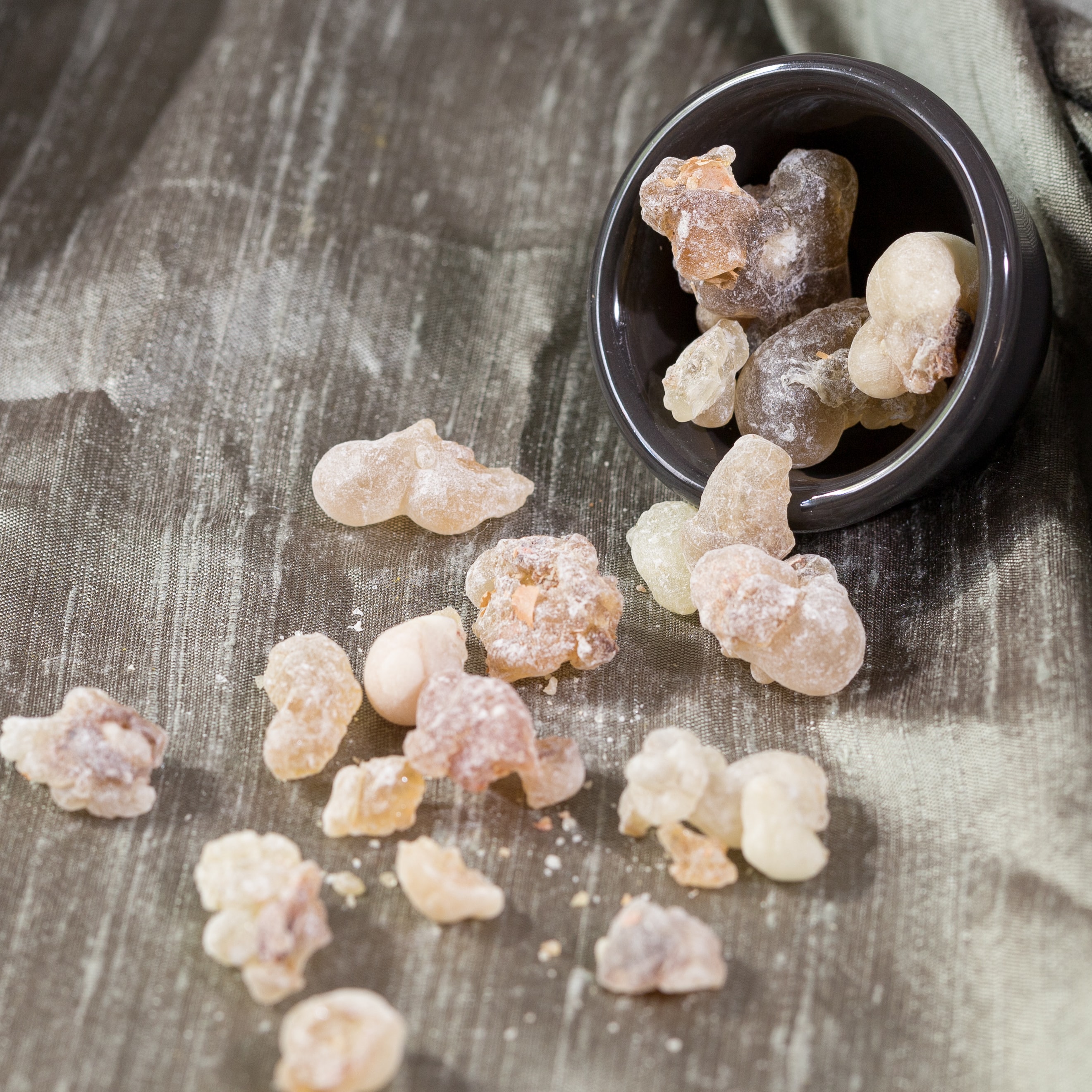
The first herb/plant that came to me when thinking about grief and death, was frankincense. And for good reason.
Frankincense was one of the gifts from the Three Wise Men to the baby Jesus. It has been used for over 5000 years in religious ceremonies in a number of cultures and religions.
Frankincense is a resin that comes from the bark of the boswellia tree that is native to the Middle East and north Africa. It is extremly fragrant and has a sweet, citrusy aroma.
Spiritually, the smoke from the resin is said to call the angels and send prayers to heaven.
I feel at peace during that time of church, when the incense is burned. The aroma has a very calming effect for me.
We all know, or should know, the smell and taste of peppermint. It is all around us, from room sprays to candies.
Why? Because it is so uplifting.
Peppermint works to clear the mind and regain focus. It helps us to keep going in times of grief.
If you would like to take a little journey with the plant, here is a guided meditation with peppermint from herbalist Correne Omland, from Spiraea Herbs.
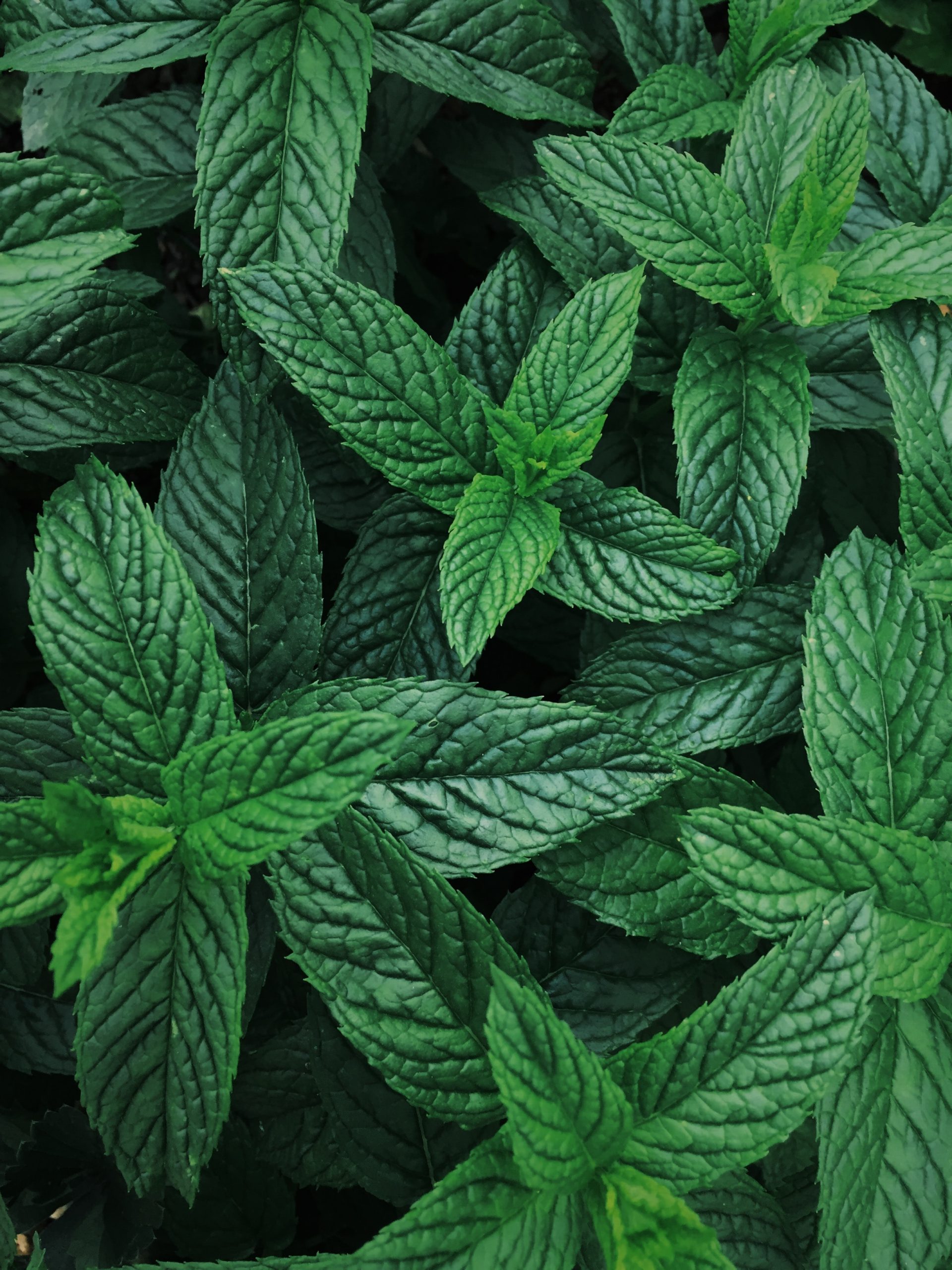
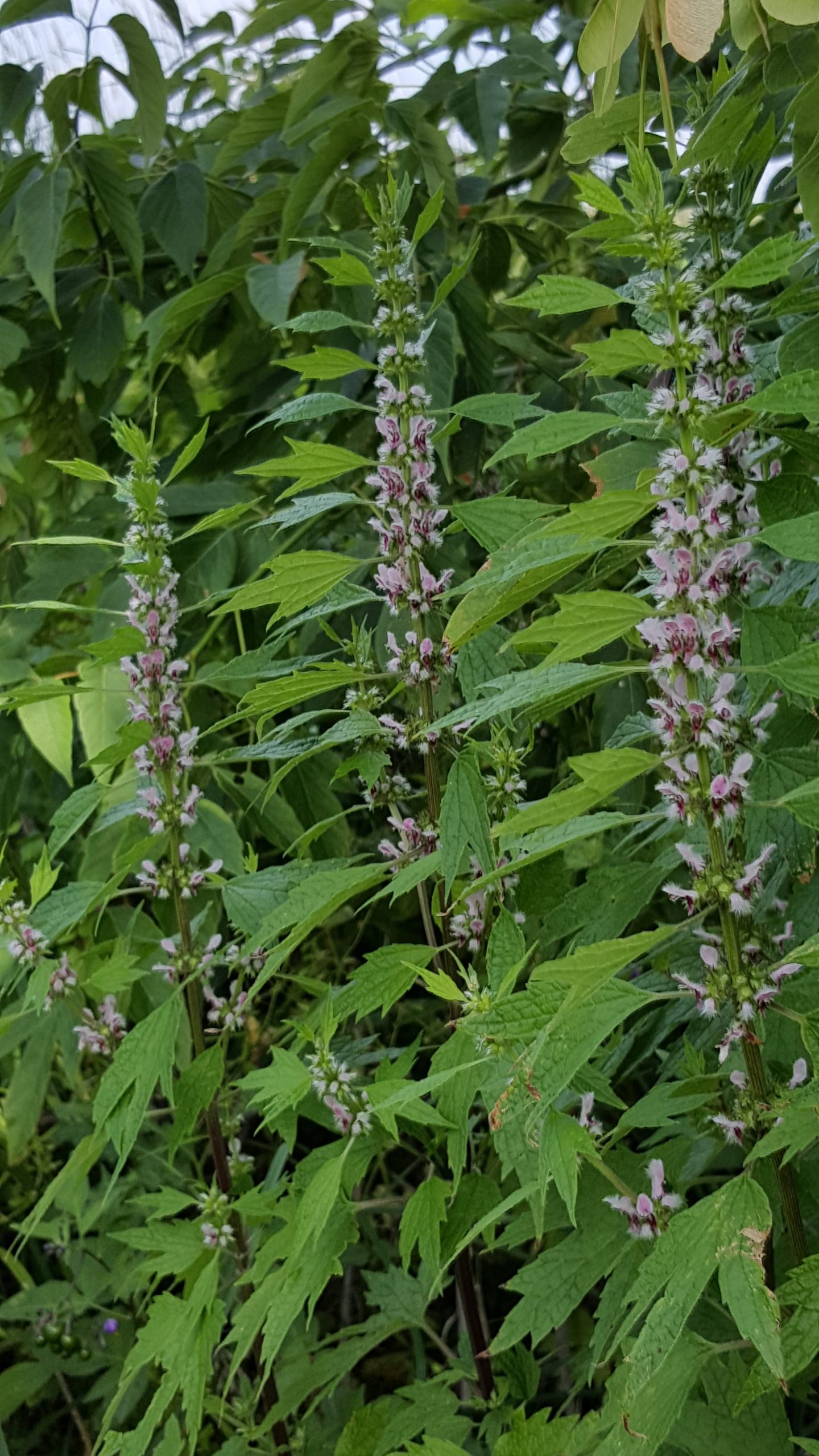
This herb is dear to my heart because it grows abundantly on my parent’s farm.
As it’s name suggests, Motherwort is there to comfort and protect. This is the plant you want to go to when you just can’t do it anymore.
It’s latin name, Leonurus cardiaca, means “lion hearted”. Strong and heart centered is what this plant offers.
Motherwort is a member of the Mint family, just like peppermint. It doesn’t have the pleasant aroma like the other mints, but it is strong and robust, and will grow almost anywhere, like most mints.
If you would like to learn more about how Motherwort can help you, check out my blog post, “Motherwort – It’s Uses & Benefits“.
The rose is probably the most highly recognized plant for uplifting one’s spirit.
It has always been a symbol of love and forgiveness.
I like how a blog post from the Herbal Academy describes the thorns: “The thorns are not to wall you off from the outside world, but instead, they express the complexity, beauty, and darkness that accompanies grief.”
The rose has the capacity to help us see the love, comfort, compassion and kindness in the world around us.
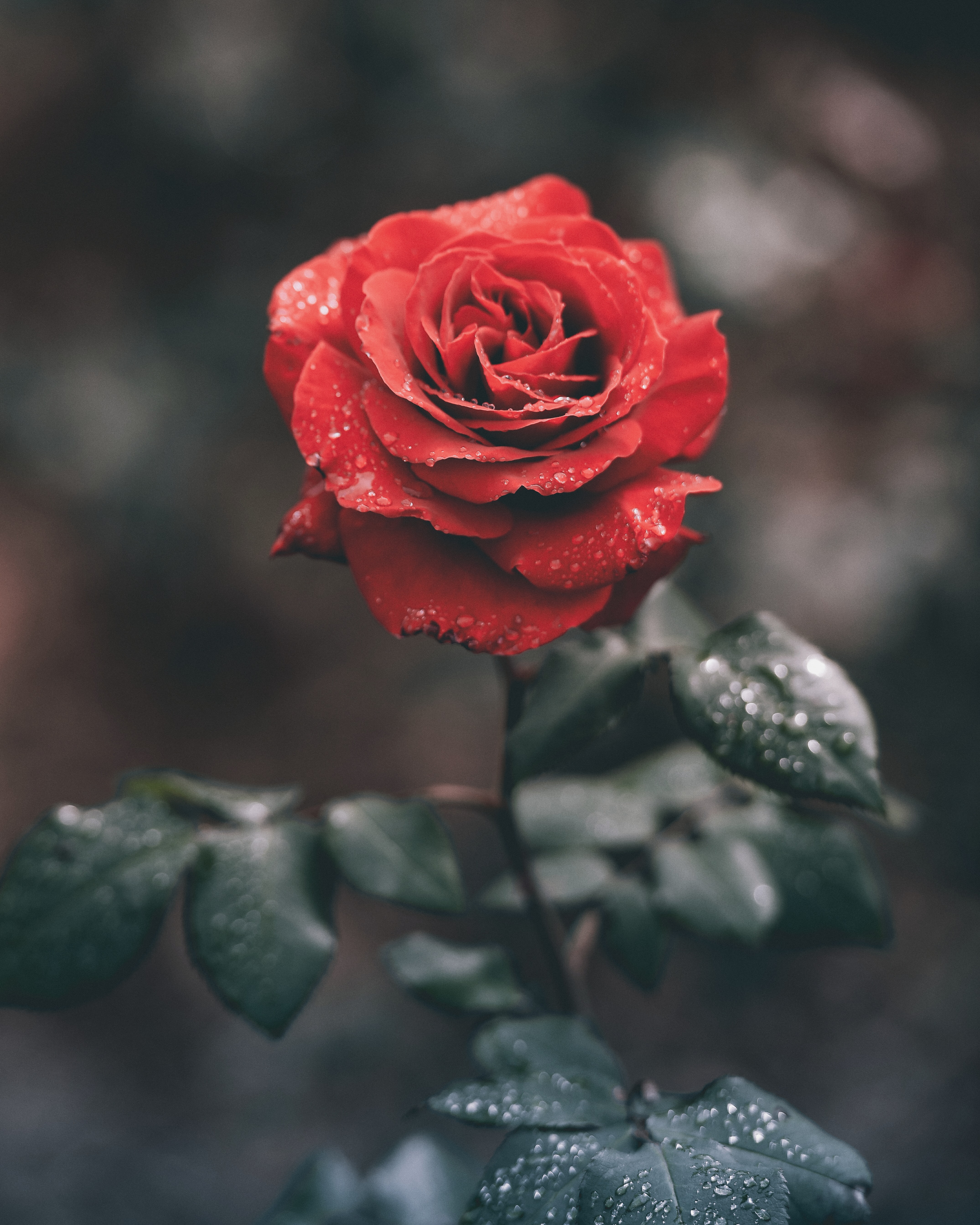
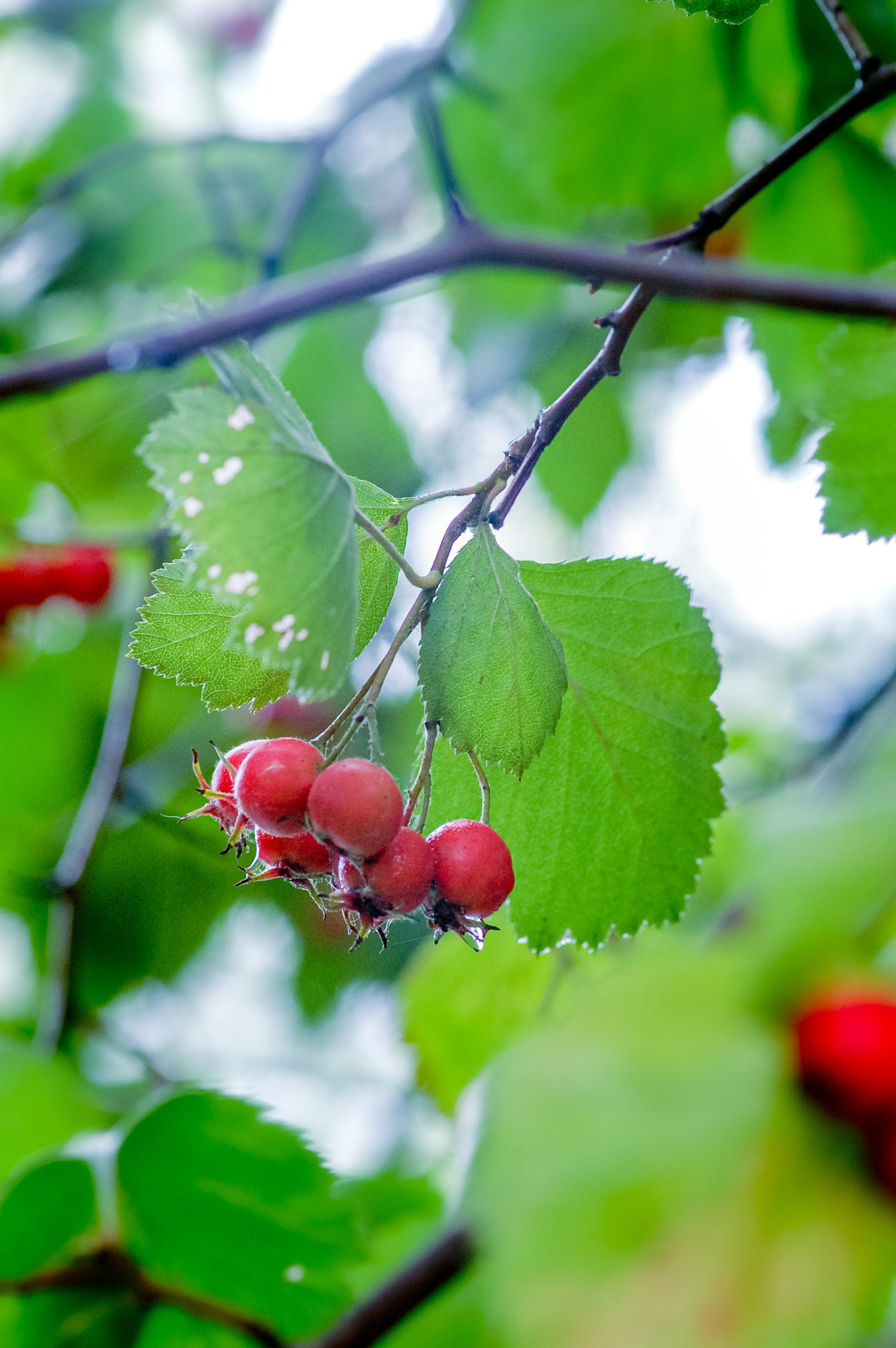
Hawthorn is the classic heart tonic remedy in Western Herbalism.
It’s red berries are best known for helping the heart.
It is also known as a mild sedative and can help calm one’s nerves.
Hawthorn encourages one to find hope, love and longevity in the journey forward.
When our spirit becomes weak and frail, hawthorn will help in restoring strength once again.
Hawthorn can bring back the confidence and help one to not live in fear of death.
Here is a short podcast with more info on hawthorn from HerbRally.
There are many other herbs and plants that can help with grief as well. The list is rather endless, as all plants support us in so many ways.
Here is a list for you to reference:
Grief enters our lives in so many ways. It can come as a loss of a loved one, loss of a job, health issues, arguments, etc.
The important thing to learn from grief, is how to handle it in a healthy way. Know what your limits are and how much you can handle.
Never be afraid to ask for help, or ask someone to just listen to what you have to say.
Taking a walk in nature or meditating can also help take away some of the sadness you may be feeling.
Just know that grief is a part of life and bonds us closer together.
https://herbandroot.com/blogs/collections/frankincense-myrrh-more-valuable-than-gold
http://www.flowerfolkherbs.com/articles1/frankincense-a-sacred-resin
https://www.happiness.com/magazine/health-body/essential-oils-for-grief/
http://northforestfarms.com/2021/10/07/good-grief/
https://www.evolutionaryherbalism.com/2018/07/13/herbs-for-grief/
The world is a nettle; disturb it, it stings. Grasp it firmly, it stings not.
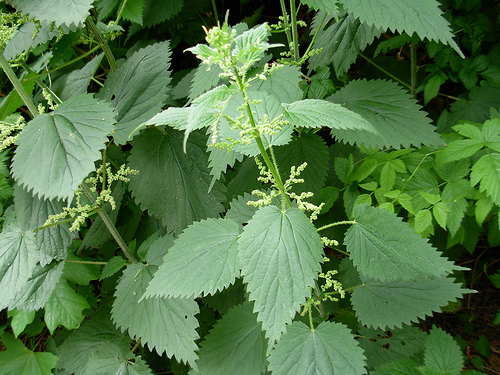
Stinging nettle has been used for centuries to treat various maladies, including anemia, arthritis and skin diseases. Its leaves are edible in salads or cooked like spinach.
And yet many people see it as a weed and want to pull it up by its roots to eradicate it.
But the benefits of stinging nettle include supporting urination, increasing blood flow and reducing neural inflammation.
Let me show you that this plant is more than just a weed.
Stinging nettle is generally considered a weed and can be found growing wild in woodlands and on river banks. It also prefers disturbed soils, such as on farmsteads, manure piles or near abandoned buildings.
Stinging nettles have long fleshy roots that can grow deep into the ground. This is important, because this is how the plant becomes so nutritious, by pulling up vitamins and minerals deep in the soil.
The leaves, stems and roots are covered in tiny hairs that release histamine and other chemicals that can sting painfully. These chemicals cause an itchy, irritating sensation on the skin which only lasts about 15 minutes.
Growing up, my mother called this plant “itch weed”, because it made you itch. So I highly recommended that you wear gloves when handling this plant. Or if you want to get the true feeling of stinging nettle, don’t.
This plant is a very fast grower and spreads easily by seed or underground shoots.
For optimal nutrition and medicinal properties, it should be picked before flowers appear. I like to harvest the tops in early spring when the plants are still young. They will grow back, so you can get a number of pickings.
Susun Weed says to grasp it by a top leaf and cut just the very top (no more than 8 leaves) and put that in the foraging basket. Since nettles are so fibrous, she says to only pick the very tops. If the scissors have difficulty cutting, it’s too far down.
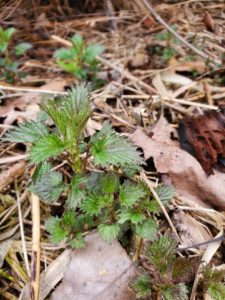
The leaves and young shoots of stinging nettle are edible. They have a slightly bitter, nutty flavor that most find pleasant. Nettle leaves can be a simple substitute for spinach in any dish.
Nettles are rich in vitamins A, C, D and K as well as iron, potassium, calcium and manganese.
One serving of stinging nettle provides almost all of the recommended daily allowance for vitamin K per day.
Nettles are also rich in chlorophyll, which gives them their green color and may be responsible for some of its health benefits.
Two studies published in the “Journal of Agricultural and Food Chemistry” evaluated the antioxidant activity of nettle extract and found it to be higher than other popular drinks like cranberry juice, grape juice and green tea. The researchers concluded that the high antioxidant activity may be due to nettle’s chlorophyll content.
The leaves are said to have a beneficial effect on the urinary system because they contain high amounts of potassium, calcium and magnesium. They also can help reduce inflammation in the bladder lining which may prevent chronic infections from developing.
In addition to its nutritional value, some studies suggest that stinging nettle may also have medicinal properties.
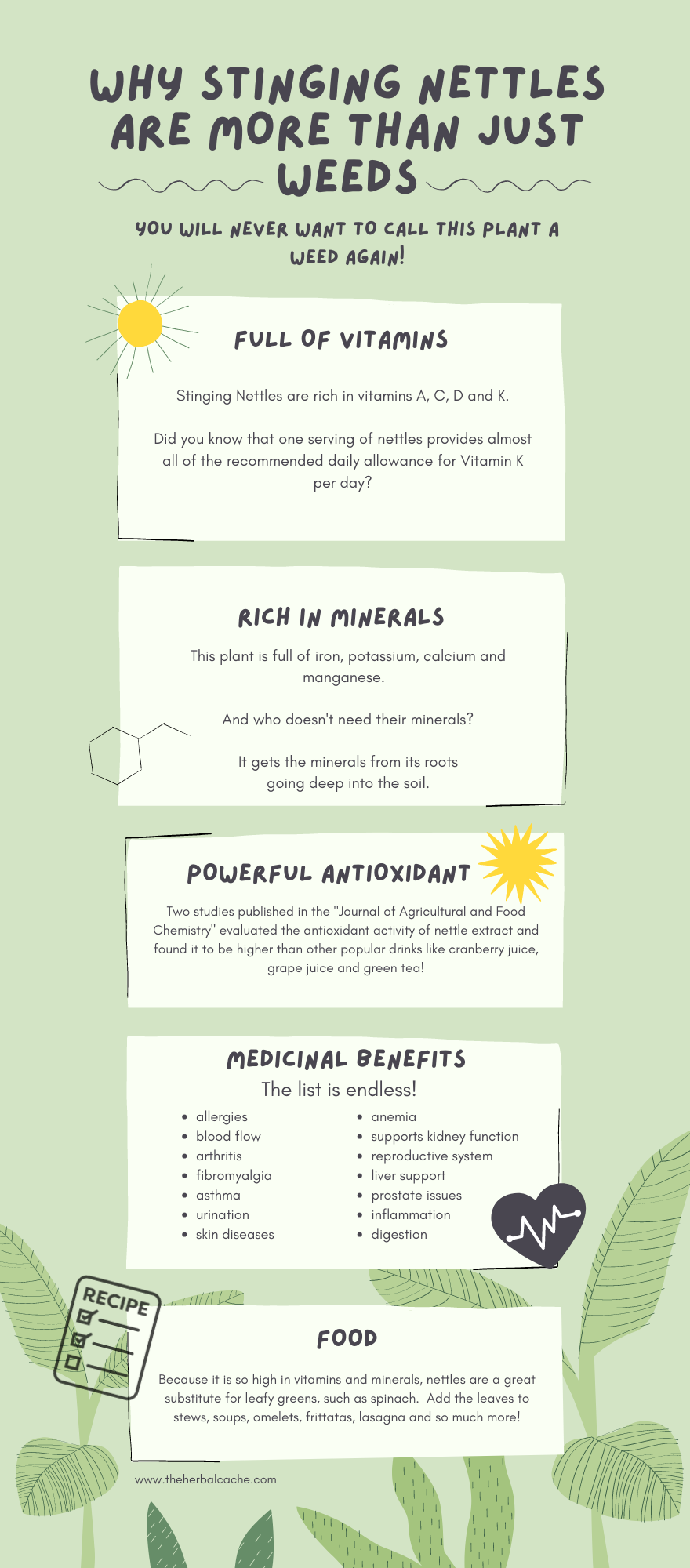
In addition to its nutritional content, stinging nettle is said to have medicinal properties. Its roots and leaves are used in traditional herbal remedies for conditions such as anemia, arthritis and skin diseases. In addition, modern uses include supporting urination and increasing blood flow. Nettle root may also help relieve symptoms of the common cold.
One small study published in the “Journal of Complementary and Alternative Medicine” found that patients who suffered from frequent colds showed a significant decrease in number of colds after taking nettle root extract daily for 12 weeks. These results were not found with the placebo group.
Another study conducted by researchers at the University of Virginia found that drinking stinging nettle tea reduced the total number of colds by more than one-third among patients who suffered from chronic respiratory infections.
Brigitte Mars talks about how people have used nettles for thousands of years to help with pain from arthritis, fibromyalgia and as an early substitute for Viagra! By gently brushing a stem of leaves over one’s skin, the irritation causes a huge blood flow to the area (called irtication). Thus helping with pain, inflammation, etc.
Nettle is a wonderful herb for those with allergies. A study published in “Alternative Therapies in Health and Medicine” suggested that an extract from this plant may reduce inflammatory responses due to allergies, which suggests it may be effective in relieving symptoms of allergies and asthma.
Herbalist Matthew Wood says the seeds in particular, may help get rid of allergies, both food allergies and seasonal ones. He also recommends the root be taken for prostate problems.
Stinging nettle also helps get rid of mucus in the lungs.
David Hoffman calls this plant the “ultimate green tonic”. That should tell you something.
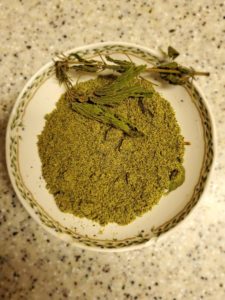
There are a number of ways you can incorporate stinging nettle into your diet.
A very easy way is to cook it like spinach or added to soups and stews for extra nutritional benefit. Herbalist Rosemary Gladstar likes to saute it with a little olive oil, lemon juice and feta cheese.
Herbal Revolution preserves their nettles like this to to enjoy all year:
These little “patties” can be added to soup, pesto, sautéed, in frittata, scrambled eggs, smoothies, etc. This could also be done with dandelion greens!
The young shoots may also be eaten fresh or steamed. But make sure to get the tops of young plants. Nettles are very fibrous in older plants and growth near the ground.
To make stinging nettle tea, steep one teaspoon of dried herb for eight to 10 minutes in hot water. This makes an excellent substitute for coffee that is high in antioxidants and many other nutrients.
People who suffer from chronic conditions like allergies and arthritis may find relief by drinking stinging nettle tea.
Taking nettle in a tincture form is available if you can’t stomach eating the greens, or don’t like drinking teas. As a tincture, it is a more concentrated and you can take it as needed. You can find tinctures in most natural food or wellness stores.
Making a herbal decoction with nettles is another great way to take this plant. Just follow these simple instructions:
My favorite way to use nettles is by making Nettle Gomasio! This herbal spice blend can be used on almost everything. I personally like it on my fried eggs and popcorn.
In the video below, I show you just how easy it is to make your own Nettle Gomasio!
I hope I have shown you just how beneficial stinging nettles are for us.
Not only are they nutritious in terms of the vitamins and minerals they provide, but they also help support our health and body in a number of ways.
Nettles have been around for thousands of years, and I hope they will be around for a thousand more. Because we need them.
So go and “nettle” up!
Have you ever had one of those moments when, from out of the blue, you have a fantastic idea or thought? Well, I had one today, an idea for this blog post – the color green.
It all started this morning when I got a manicure and pedicure, something to prep me up for our upcoming vacation. I don’t do this often, so it is quite the treat for me.
For my nail colors, I chose two shades of green, my favorite color. I’ve done pinks and reds a couple of times, but I just don’t care for the “pop” they have. They are just a little to bold for me. So I just stick with the good ol’ natural green.
Later, after I got home and was working on some household chores, it occurred to me that I put a lot of “green” in my life. Green fingernails, plants, clothes, etc.
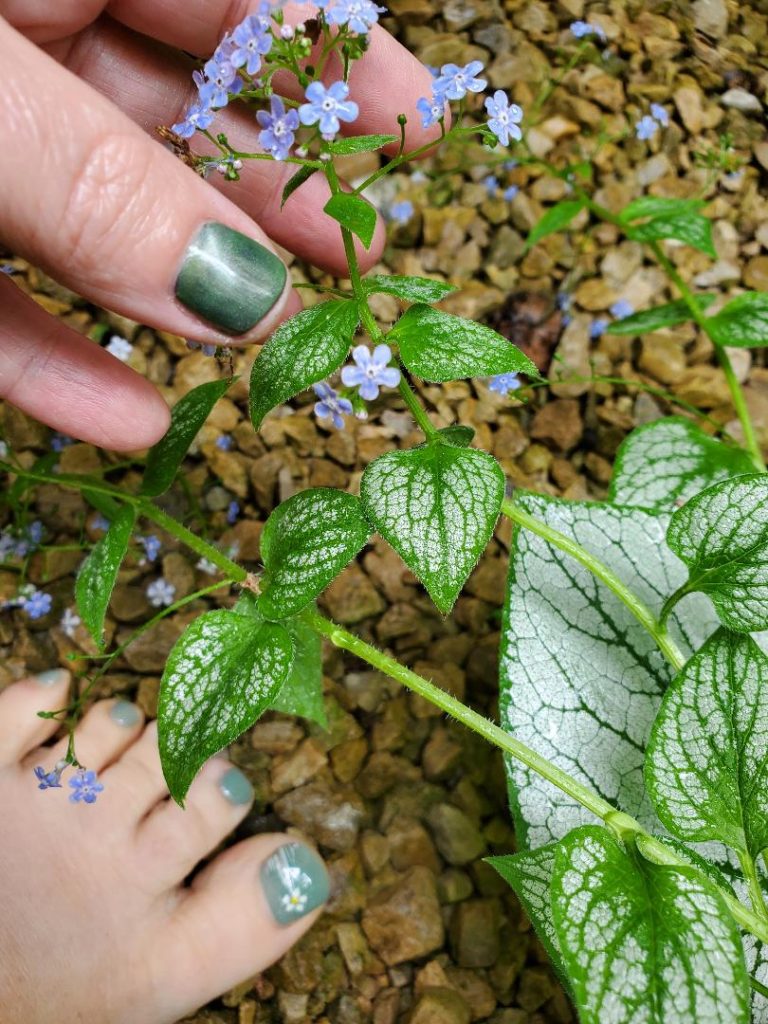
That got me thinking about the color green itself, and the thoughts and views surrounding it. I believe it has a very interesting story.
So, first lets look at the color itself first. What is green?
Adjective: of the color between blue and yellow in the spectrum; colored like grass or emeralds
Noun: green color or pigment
Verb: make or become green in color
I was very curious as to what the definition of green was and how it would be described. And all I got was “it’s between blue and yellow”. Well, that’s like saying the definition of a car is between a truck and bicycle. And it leaves a wide open space, because there is a lot of green!
So that raises the question, how much green are we really seeing?
For most people when they take a walk outside, they see green trees, green plants, green weeds, etc. I have to admit, back in the day, that is what I saw too. Just green.
And then Kermit the Frog’s little song, “It’s Not Easy Being Green” popped into my head.
He sings about green not being viewed as colorful, like red or orange, and it gets passed by everyone. And it blends in with so many other ordinary things.
But then at the end he says “I’m green, it’ll do fine. It’s beautiful. And I think it’s what I want to be”.
That made me stop and think, what have I passed by? What did I miss? Or was it intended for me to not observe it?
I don’t know about the past, but I do know that going forward I can see in between the blue and yellow and catch all the green.
What I mean by that, is now that I know many different plants, I can see between the “greens” and see all the tones and hues.

The psychological side of the color green takes on many forms. There are the good effects, the not so good, and a few in between.
How does green make you feel?
Well, that will depend on the situation, environment, or concept, right?
In researching the color, I found that green is mostly a positive color. It creates warmth, a sense a safeness, peacefullness and more.
And to think that nature is full of green! What does that tell us?
Plants are green for so many reasons, like the ones just mentioned.
Plants are comforting. Have you ever just gone out and sat on the grass or under a tree and felt at peace?
We feel safe in our homes, built from trees.
How many times did you look for that green four-leaf clover for good luck?
And, money does come from trees! Paper money that is. I know, dorky reason as to why plants are green.
But for real, why are plants green? Because they catch the red light. What?
True. Green is the complimentary color of red.
So, plants and their leaves look green because the “special pair” of chlorophyll molecules uses the red end of the visible light spectrum (light from the sun) to power reactions inside each cell.
The unused green light is reflected from the leaf and we see that light, which is green.
The chemical reactions of photosynthesis turn carbon dioxide from the air into sugars to feed the plant, and as a by-product the plant produces oxygen.
How cool is that!
That made me hungry…
So I have to share with you some “Green Bread”. Yes, green bread.
So when you first hear green bread, it’s like “Yuck!”
But not this kind!
My mother started making it years ago, and it has been a staple on the table for all family gatherings. My nieces and nephews just love it. It is very simple to make and freezes nicely if you want to save some for later.
Go HERE for the recipe of this wonderful, moist bread that is like a dessert!
I hope your family enjoys it as much as my family does.
And start looking at “GREEN” in a new way and seeing all the green that nature has to offer us!

Did you know that Earth Day is the largest secular observance in the world? How cool is that!
This is the day where we can make an impact for the Earth. It is the day where we can begin taking care of the Earth like we want to be taken care of.
Earth Day began back in the 1970’s when there were policital and economical ups and downs. There were a number of people who became concerned with how we were treating our environment.
In 1970, Wisconsin Senator Gaylord Nelson introduced his idea for a ‘national teach-in on the environment’. This turned into the first Earth Day being celebrated across the United States on April 22, 1970. It pulled 20 million people together to promote a cleaner and safer living environment.
Over the decades, it grew to other countries and finally in 1990, it was global, with 141 countries and 200 million people celebrating Earth Day.
Earth Day is associated with “going green”. Going Green is defined as making more environmentally friendly decisions, such as to reduce, reuse and recycle.
And that’s great!
But are all Going Green decisions environmently friendly?
To find out, you have to dig deeper and look at the entire spectrum of the decision. Here are a couple “green” decisions to review.
Take a look at wind energy, which is one of the cheapest forms of clean energy. Wind turbines produce electricity from the turbines that spin generators.
Wind power is carbon-free and about 85% of turbine components, including steel, copper wire, electronics and gearing can be recycled or reused. But the fiberglass blades remain difficult to dispose of.
Tens of thousands of aging blades are coming down from steel towers around the world and most have nowhere to go but landfills. In the U.S. alone, about 8,000 will be removed in each of the next four years. These blades don’t disintagrate, and will be in the ground forever.
There are companies trying to find ways to recycle these turbine blades, but until then, what do we do with the blades? Is the final product worth filling landfills?
Another one in which to weigh the pros and cons is lithium, which is used in batteries, such as in electric cars. Take for example, the Tesla Model S battery, which has about 12 kilograms of lithium in it.
Lithium batteries are preferred over alkaline batteries for a number of reasons. First they last longer. They can withstand colder temperatures and they work better in portable devices, such as power tools.
But the mining and processing of lithium is far from being environmentally friendly. The extraction process uses a lot of water, and I mean a lot. When the water being used, “accidently” gets back into the environment, contamination takes place. In Nevada, researchers found impacts on fish as far as 150 miles downstream from a lithium processing operation.
Just because something is called “green”, doesn’t make it totally “green”. Research it and use your best judgement.
As stewards of the Earth, it is up to us to care for it so that it may take care of us in return.
There are many ways to take part as a care-taker for our planet.
For herbalists, Earth Day is recognizing that now is the time where plants are beginning to grow and start a new season.
Everyday we are stewards of the land as we share our knowledge and enthusiasm for the plant world. So in short, we celebrate Earth Day everyday!
But we, as herbalists and plant lovers, can do much more to help the planet. Here are some simple suggestions:
The Herbal Academy has a wonderful post called “How to be an environmentally sustainable Herbalist”. It has some great reminders on how we need to protect our plant world.
Want to try and see how much you know about deforestation and biodiversity?
Take the quiz HERE.
How did you do?
Did you learn anything new?
Is there something you can do today to start helping the environment?
If a pug can do it, we can do it!